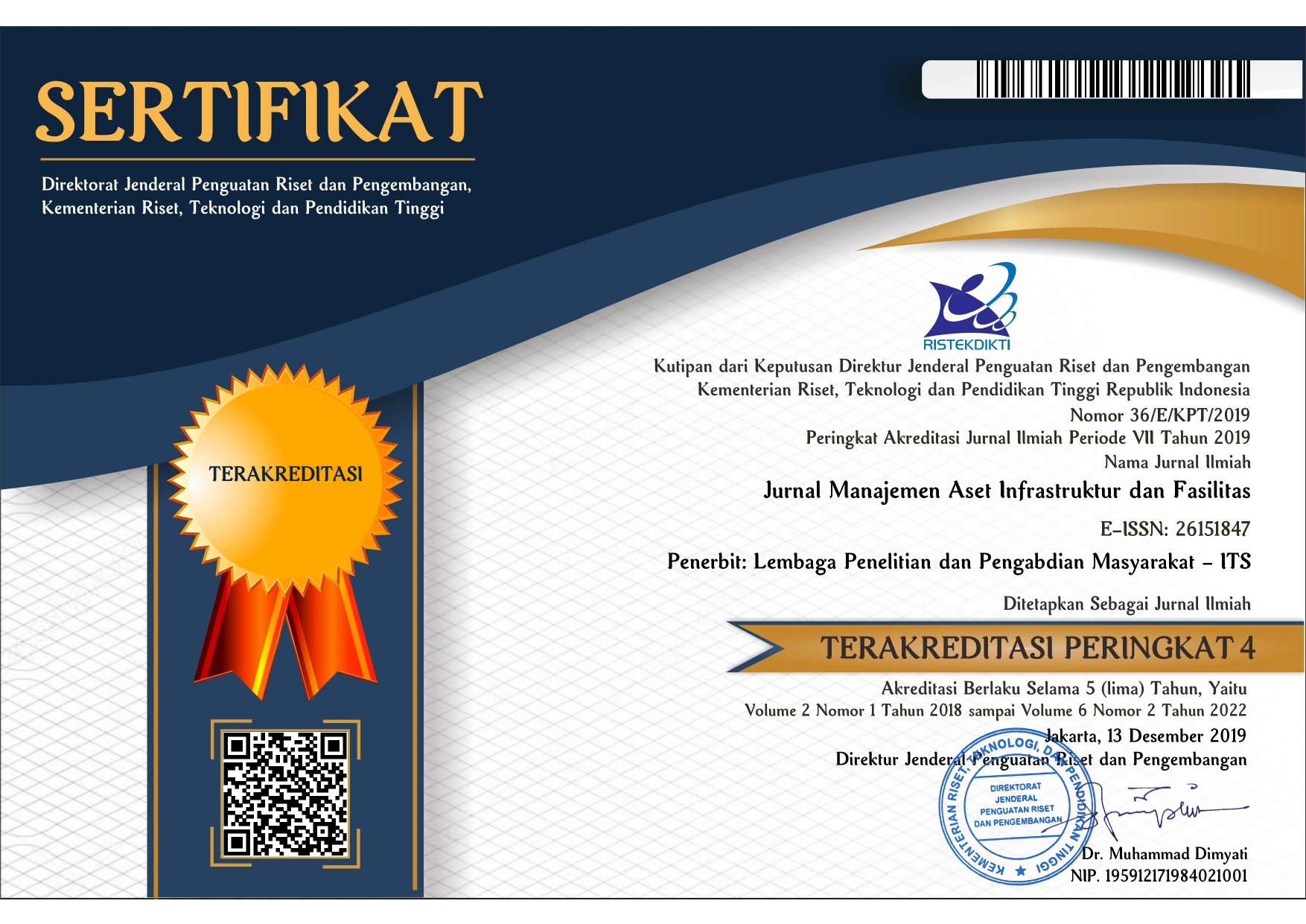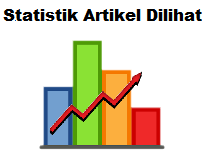Penerapan Manajemen Fasilitas dan Smart Mobility di PT. Kereta Api Indonesia (Persero)
Abstract
Penelitian ini bertujuan untuk mengetahui penerapan manajemen fasilitas dan smart mobility di PT. Kereta Api Indonesia (Persero) dengan eksplorasi kejadian atau fenomena yang dapat dijadikan pelajaran berharga bagi pengembangan teori dan kondisi eksisting penerapan tersebut. Penerapan manajemen fasilitas diukur dengan peningkatan kualitas layanan dan peningkatan inovasi layanan. Indikator pengukuran untuk penerapan smart mobility yakni penambahan kapasitas layanan, pengaplikasikan teknologi, dan peningkatan fasilitas operasional. Dari penelitian ini diketahui pengembangan fasilitas-fasilitas layanan terbaru yang diberikan PT. Kereta Api Indonesia sudah menerapkan konsep manajemen fasilitas dan smart mobility sehingga memberikan pelayanan yang memudahkan pengguna layanan jasa transportasi kereta.
Full Text:
PDFReferences
Badan Pusat Statistik (BPS). (2019). Jumlah Penumpang Kereta Api 2006-2019. Diakses dari http://www.bps.go.id/, pada tanggal 02 Oktober 2019 pada jam 10.00 WIB.
Benevolo, C., Dameri, R.P. and D’Auria, B. (2016). “Smart mobility in smart city”. In Empowering Organizations (pp. 13-28). Springer, Cham.
Caragliu, A., Del Bo, C. & Nijkamp, P. (2011). “Smart cities in Europe”. Journal of Urban Technology, Vol. 18, Issue 2, pp.65-82.
Coenen, C., Alexander, K. and Kok, H. (2013). “Facility management value dimensions from a demand perspective”. Journal of Facilities Management, Vol. 11, No. 4, pp.339-353.
De Vries, J.C. (2007). “The influence of real estate on performance”. PhD thesis. TU Delft. Delft: Eburon.
Giffinger, R.., Gudrun, H. (2010), “Smart cities ranking: an effective instrument for the positioning of the cities?”. ACE: Architecture, City and Environment, Vol. 4, No. 12, pp.7-26.
Komninos, N., Pallot, M. and Schaffers, H. (2013). “Special issue on smart cities and the future internet in Europe”. Journal of the Knowledge Economy, Vol. 4, No. 2, pp.119-134.
Letaifa, S.B. (2015). “How to strategize smart cities: Revealing the SMART model”. Journal of Business Research, Vol. 68, Issue 7, pp.1414-1419.
Lombardi, P., Giordano, S., Farouh, H. and Yousef, W. (2012). “Modelling the smart city performance”. Innovation: The European Journal of Social Science Research, Vol.25, No. 2, pp.137-149.
Mahesa, R., Yudoko, G. and Anggoro, Y. (2019). ”Dataset on The Sustainable Smart City Development in Indonesia”. Data in Brief, 104098. Published by Elsevier Inc. An open access article under the CC BY license (http:// creativecommons.org/licenses/by/4.0/).
Nam, T. and Pardo, T.A. (2011). “Conceptualizing smart city with dimensions of technology, people, and institutions.” In Proceedings of the 12th annual international digital government research conference: digital government innovation in challenging times (pp. 282-291). ACM.
Nurmandi (2014). “Manajemen Perkotaan: Kota Cerdas (Smart City)”. Jusuf Kalla School of Government Universitas Muhamadiyah Yogyakarta.
Satori, D. and Komariah, A. (2009). “Metodologi Penelitian Kualitatif Alfabeta”. Bandung Jurnal Ilmiah Perikanan dan Kelautan, Vol. 7, No. 2, November 2015.
Sugiama, Gima A. (2008). “Metode Riset Bisnis dan Manajemen”. Guardaya Intimarta. Bandung
Soemitro, R.A.A. & Suprayitno, H. (2018). “Pemikiran Awal tentang Konsep Dasar Manajemen Aset Fasilitas”. Jurnal Manajemen Aset Infrastruktur & Fasilitas, Vol. 2, No. 1, Juni 2018
Staricco, L. (2013). “Smart Mobility Opportunities and Conditions.” Tema. Journal of Land Use, Vol. 6, Issue 3, Pp. : 342-354.
DOI: http://dx.doi.org/10.12962/j26151847.v4i1.6834
Refbacks
- There are currently no refbacks.
Jumlah Pengunjung :
Flag Counter

Jurnal Manajemen Aset Infrastruktur & Fasilitas by Departemen Teknik Sipil ITS is licensed under a Creative Commons Attribution-ShareAlike 4.0 International License.





